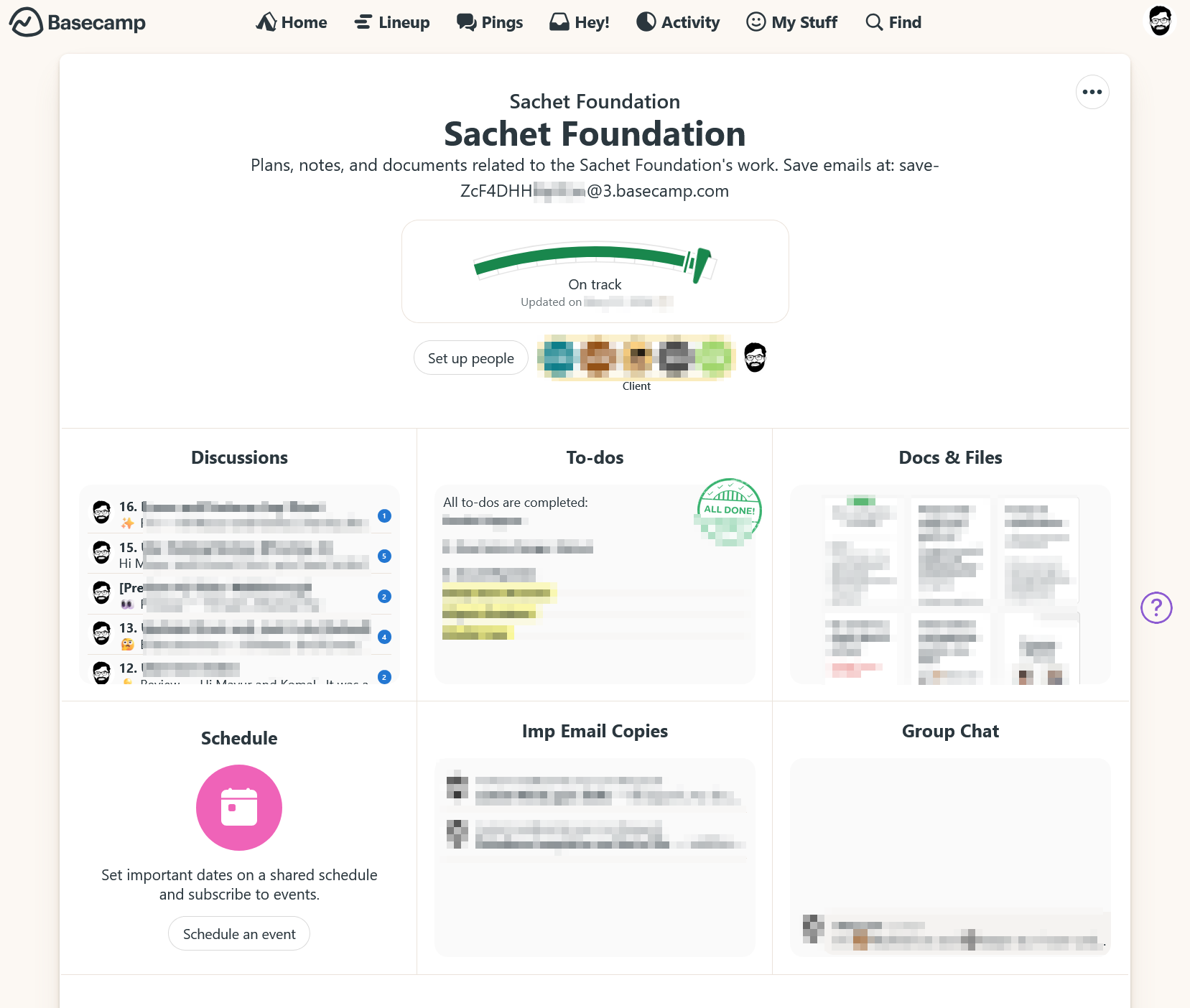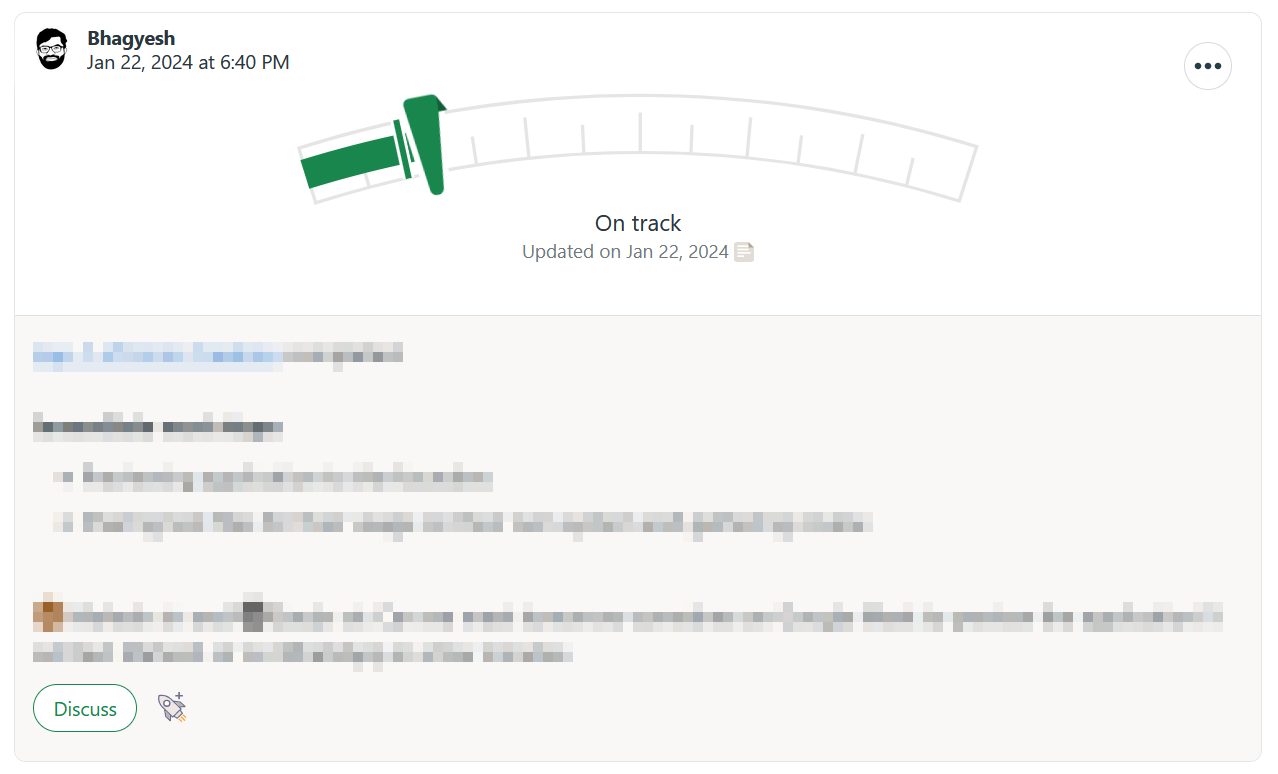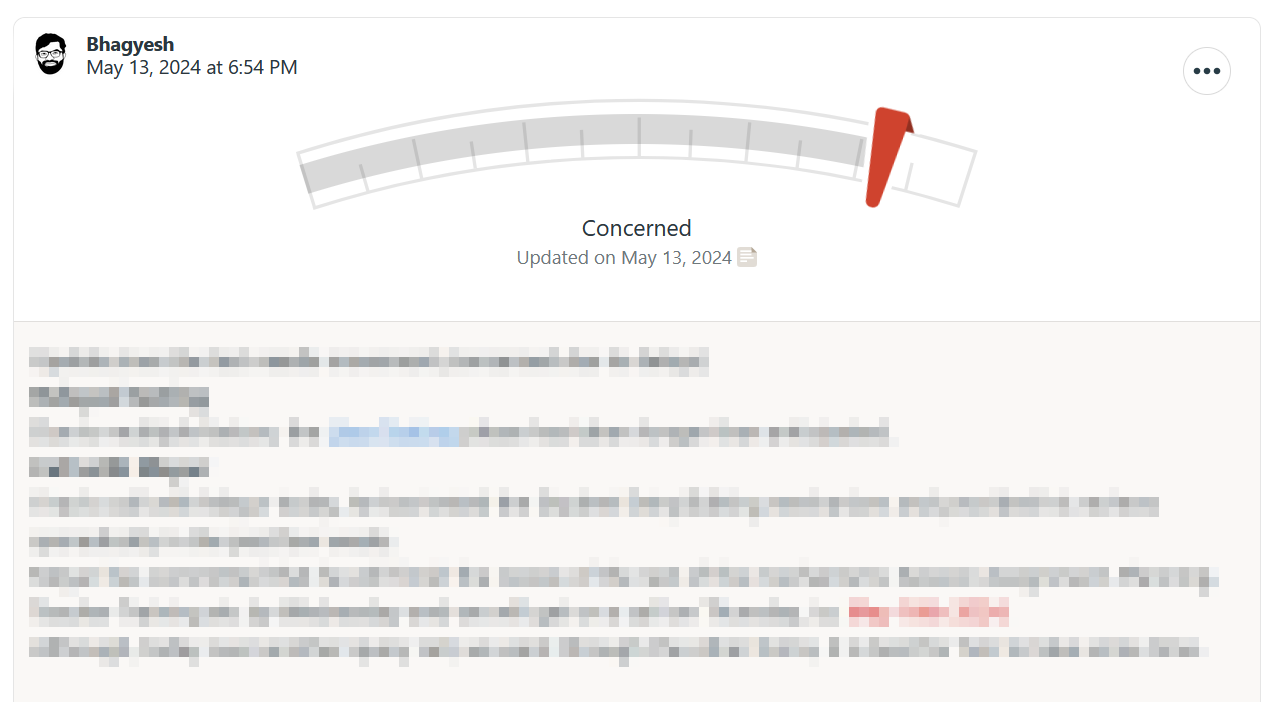How we work
I thought it would be a good idea to share how we work internally as well as with clients. It sets the right expectations from the outset.
First let’s get the question of tool out of the way.
We use Basecamp
Our documents, discussions, to-dos, updates, messages, etc live in Basecamp, a tried-and-tested project management tool. It is surprisingly simple to work with. It simply doesn’t get in our way of working calmly.

Our Basecamp Homepage Screenshot
Every client is a project
We create a dedicated Basecamp project for every client and onboard them. It looks like the screenshot provided below. You’ll notice that there are six main tools visible in this particular project: Discussions, To-dos, Docs & Files, Schedule, Imp Email Copies and Group Chat.

A client's workspace in Basecamp
- Discussions: Traditionally, people use emails to discuss things. In the last decade, those emails transformed into email threads...and there is no way out of this web of threads. Not only we get entangled with 100 emails in a thread but also with time, emails get buried and we lose the whole thread.
To avoid all these, we use Discussions tool in Basecamp. Just create a topic, write a note, add images, links and open it for relevant people to discuss. Simple. Everything stays in the same place.
- To-dos: We use this tool extensively. For every task, we create dedicated to-do lists within the project. It guides our work and provides an overall idea to the client about how we are planning and where we are in our execution.
- Docs & Files: This is where we keep our all documents and files related to this project, i.e. this client. Organized in subfolders and ready to refer at a moment’s notice. We also link our Google Drive folder in this tool, so that anyone can access them through this tool.
- Schedule: Since we use Basecamp as our main workspace, any meeting or to-do’s deadline is visible via its Schedule tool. This allows clients to cut through all the noise of their Google Calendars and keep a tab on the meetings or to-dos that matter.
- Imp Email Copies: As explained under the “discussions” point, we rarely use email. But still, sometimes we have to deal with a few emails. Basecamp provides us an extremely useful feature of forwarding emails to projects. For example, this project’s auto-generated email-ID is
save-ZcF4DHHxxxxx@3.basecamp.comAnyone sending an email at this id will land under this project. We can respond to the emails from this tool, refer to it, discuss it, etc. Mostly, we use it for email archival. - Group Chat: Our work do not need us to use any instant messaging apps such as WhatsApp or Slack. If there is anything worth discussing, we write up at length in discussion topic. But still, if there is something that needs the whole team’s attention without much fanfare, we use the Group Chat tool.
Depending on the need of the work, we also use a few other tools such as Card Table.
But those are just features
We did not intend to make it seem like we are selling Basecamp. We are pointing at something else: Basecamp’s design supports and encourages our work style. This is something you might be interested in hearing about.
By virtue of the nature of our work, we work remotely. Remote work requires a different set of habits and communication than that of the in-person ones.
Full-context communication
We believe in providing full context while communicating with one another. That also means that we may use 100 words instead of 10. The additional words may contain a hyperlink to a file/discussion/to-do/schedule/card/date. Providing full context is not possible on Instant Messaging or Hyper-Instant Messaging services such as WhatsApp, Slack or their clones.
Also, isn’t thinking and communicating one sentence at a time is a really bad idea to communicate anything of value?
Primarily asynchronous, occasionally synchronous
Our work is creative. We need a big, undisturbed chunk of time to ourselves during the day to focus on our client’s work. That’s why we have a policy to be reasonable in expecting a response from the other person. We leave our comment or a private ping on Basecamp and let the other person respond when it suits them. If there is something that can’t wait, the two people can get on a call and figure things out.
This work style automatically eliminates usage of instant messaging tools and encourages planning and full-context provision from everyone.
Something that works is better than many things that don’t work
Whether it is developing software or creating a design document, it almost always pays to focus one slice at a time. We group relevant tasks in their simplest possible, most-common-sense-making forms and carry out our work. This approach is in stark contrast to what most firms in our business do: treating each project as a single piece of pie and biting it from all directions at the same time. No wonder, nothing gets done. At least not in the prescribed budget and timeline.
Through our approach, after each iteration we have something that works than many things that don’t work. (Well-articulated by Ryan Singer in Shape Up)


How we share project progress
Once on-boarded on Basecamp, the client can see everything (okay, not exactly everything, we keep work-in-progress things to ourselves until they’re ready for the client’s eyes) that is happening in the project. We understand that not everyone has time to keep a tab on the work progress. So, we provide a comprehensive project update once in a while using Basecamp’s needle feature.
For example, look at this progress communication where everything is “on track”.

Or when the progress was a bit “concerned”.

Work is documentation
At the end of an engagement, clients and us—both parties feel the need to preserve and document everything that took place. It is a reasonable expectation.
Once more, this is where our practice of providing full-context and asynchronous working comes in handy. The Basecamp project becomes a live documentation. Every decision, their associated context and timeline are stored in the project. So, in the end, we handover a working, offline copy of the project to our clients for their record.